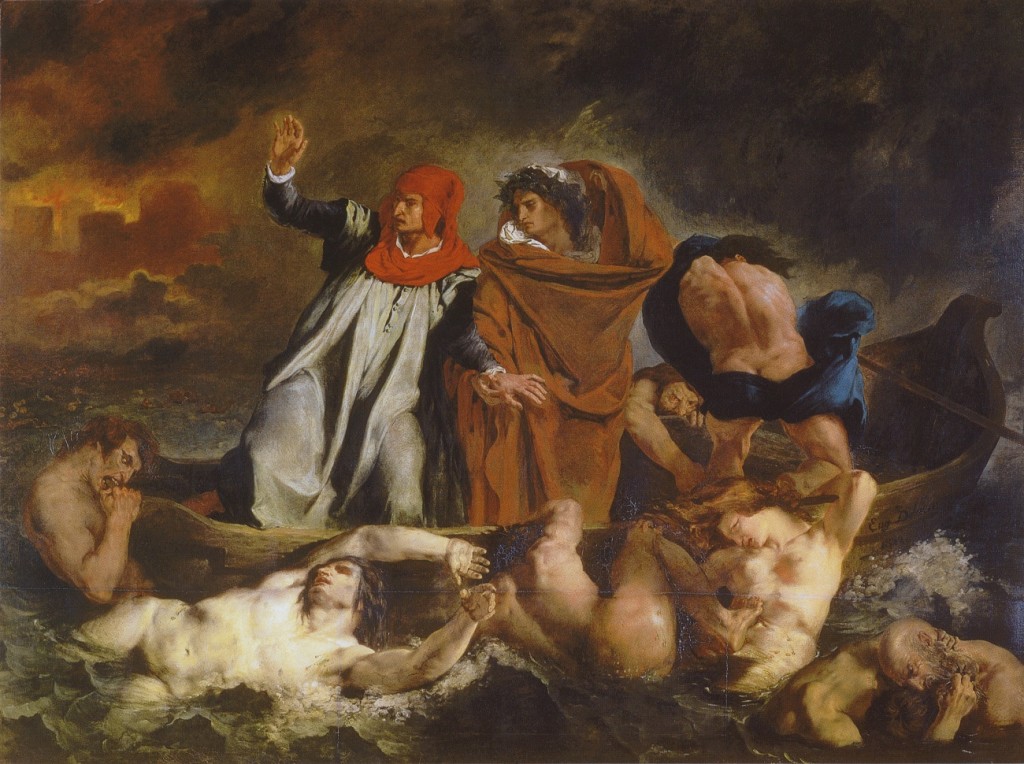
- This event has passed.
Search: Colloquium 28 (Spring 2020)
April 8, 2020 @ 1:00 pm - 1:50 pm
The Barque of Dante by Eugène Delacroix
Oil on canvas
1822
(H: 18.9 × W: 24.1 cm)
The time of classical painters imitating Greek and Roman art was over: they no longer had a place in current tastes. The underlying idea behind The Barque of Dante is that great geniuses from other lands have written works suffused with a way of seeing and feeling quite different from that of the French. Reading them stimulates the mind through new subject matter and the imagination through new boldness. So new, in fact, that Delacroix’s painting was not without its critics: “a real daub” was how Delécluze, a disciple of David, described it. Delacroix drew on the visionary writing of the Italian poet in order to create a painting of definite force and romanticism.
Although inspired by the mythological tradition, the subject of the work is the Italian poet Dante Alighieri (1265-1321). In the Divine Comedy (1306-21), Dante recounts his poetic visit to Hell, guided by Virgil. The Divine Comedy is divided into three parts: Hell, Purgatory, and Paradise. Dante’s voyage begins in Hell in the company of the Roman poet, passing through nine successive circles on his way to meet Beatrice, who will guide him through Paradise. In this scene, Dante and Virgil, piloted by Phlegyas, cross the lake surrounding the infernal city of Dis; the souls of the damned writhe in the water, trying to escape their fate by hanging onto the boat (from the catalogue entry by Vincent Pomarède).
Louvre, Paris
Reading
Dante, Inferno, cantos 1-16
For additional resources visit the Digital Dante and the World of Dante.
Topic of Discussion
We have read and discussed Enkidu’s vision of the underworld in tablet seven of the Epic of Gilgamesh, The Descent of Inanna, and Aeneas’ journey to the underworld in book six of the Aeneid to visit the shade of his father. Finally, the Qur’an contains a number of references to heaven and hell. (See especially sura 74). How do these visions in the underworld compare and contrast to Dante’s. For our discussion be prepared to share with the other members of the class your observations about three points of comparison between the Inferno and at least two of the ancient sources. Be sure to ground your comments with specific references to the texts, which you should bring to class.
[mepr-show if=”rule: 8918″]
Connecting to the Colloquium
Join Zoom Meeting: https://rhodes.zoom.us/j/305036361
Dial by your location
+1 646 558 8656 US (New York)
+1 312 626 6799 US (Chicago)
+1 301 715 8592 US
+1 346 248 7799 US (Houston)
+1 669 900 9128 US (San Jose)
+1 253 215 8782 US
Meeting ID: 305 036 361
Find your local number: https://rhodes.zoom.us/u/ar8T0oZHO
[/mepr-show]
